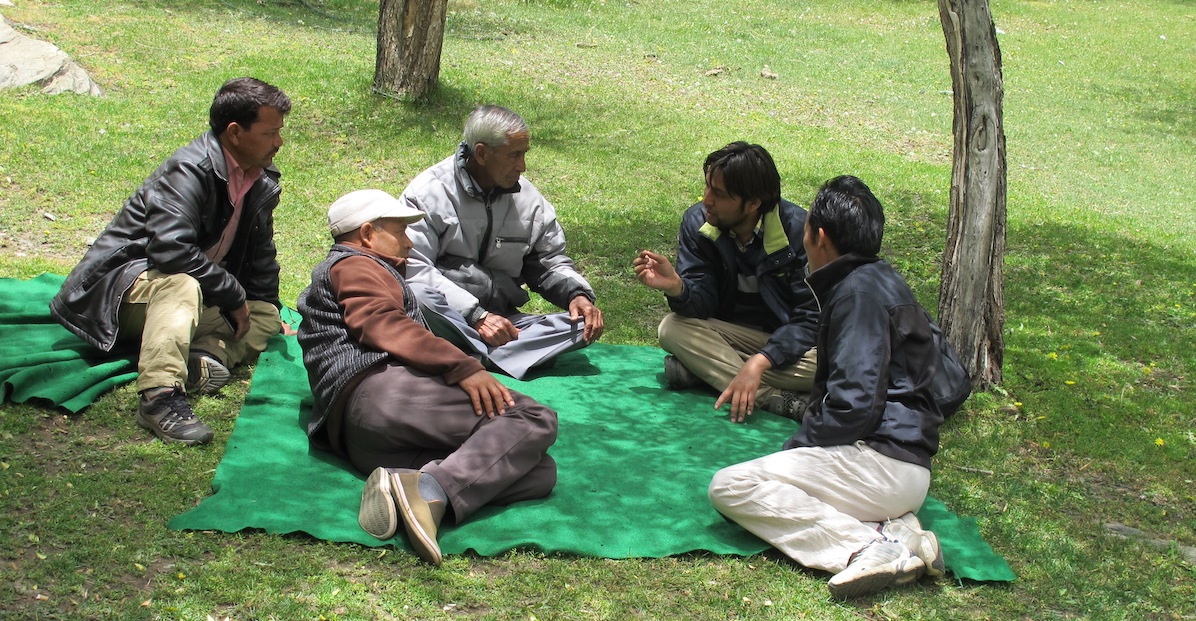Though it just looks like a conversation between friends, this photo is a meeting to negotiate the terms of trade and pricing for medicinal plants cultivated in Lahaul, in the northwestern Himalayas. The men in the picture include the head of the regional farmers cooperative, farmers from the area, and the representative from one of the largest Indian Ayurvedic companies. Photo by Ann Armbrecht
What are Mutually Beneficial Trade Relationships?
There is a lot of debate over how fair fair trade actually is. Scholars tend to focus on the unfair parts, the ways power and resources aren’t shared or distributed equitably. Companies certified in some type of fair trade emphasize the way these certifications do make a difference. They talk about the added price for certified goods, the value of premium funds, and other benefits that flow to producers, farmers, and wild collectors.
Like anything, the reality isn’t so clear cut. Fair trade certifications are imperfect tools to address challenging and intractable problems around global poverty and social and economic inequity. As everyone involved in implementing these standards makes clear, they are continuous improvement standards, which means they are a step in the right direction, not the destination.
Fair Trade in Practice
In this webinar co-hosted with the FairWild Foundation, speakers delve into the details of what makes some trade relationships more fair than others. They talk about contracts and payment terms and participation. We have selected some of the key highlights from the conversation below. The complete webinar is at the bottom of these clips.
Additional Resources
To see Sustainable Herbs Program videos from our visit to the FairWild projects in the Western Ghats, see Biodiversity and Wild Herbs.
To find out more about the work of the FairWild Foundation, go to FairWild.








Comments